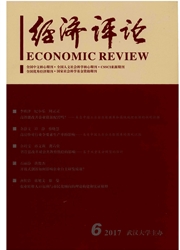

 中文摘要:
中文摘要:
中国的改革开放伴随着非公有制经济的兴起,而非公有制部门的发展需要大量的劳动力,因而所有制结构的变化在某种程度上决定着劳动力流动的方向和规模。本文基于2010年第六次全国人口普查修正后的城乡各种所有制部门就业数据,计算了城乡所有制部门问劳动力流动系数,探讨了所有制结构变迁中的劳动力流动。我们的计算发现劳动力在各所有制部门之间的流动与所有制结构变迁一致:(1)城镇公有制部门对农村劳动力始终是封闭的,流入城镇的农村劳动力主要流向了城镇民营经济部门;(2)乡镇企业的兴衰决定着劳动力向乡镇企业部门的流动;(3)国有企业改革进程决定着城镇公有制部门冗员的释放;(4)城镇民营经济部门和城镇现代企业部门先后成为国有企业冗员最主要的流向部门。
 英文摘要:
英文摘要:
China has begun to reform and open with the emergence of the non - public sectors. However,the non - public sectors need a lot of labor in the process of development. To some extent,the evolution of ownership structure determines the direction and scale of labor mobility. We calculate the labor mobility coefficient of the rural and urban sectors, and then analyzes the labor mobility behind the evolution of ownership structure in economy, which based on the urban and rural sectors employment data corrected by China Population C~ensus 2010. The result shows that: ( 1 ) it is private - ownership sectors in town have employed large number of rural labor,rather than public sectors ; (2) township enterprisers have absorbed a large number of rural labor forces in their booming time,however, declined in the 1990s,then begun to rise after 2004;( 3 )the mobility of redundant labor in public sectors is determined by the reform process of China' s state - owned enterprises.
 同期刊论文项目
同期刊论文项目
 同项目期刊论文
同项目期刊论文
 期刊信息
期刊信息
